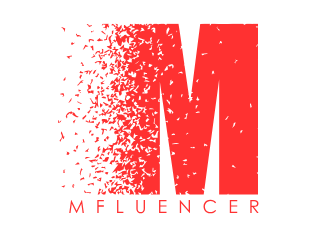Instagram Influencer Marketing

With 1.3B million monthly active users, Instagram is an excellent platform for marketers to reach their target audience. Although this user base isn’t as large as Facebook’s, it is much more engaged, making it a more effective way for brands to get their message seen and heard.
Another interesting fact is that 65% of the top-performing Instagram posts feature products. This says a lot about how the platform’s user base responds to sponsored posts. The audience doesn’t seem to have a problem interacting with posts in which other users (read influencers) are promoting products. This is particularly so in the favored niches of Instagram.
Before you start a campaign, there is one thing you must be sure of – what do you expect to get out of the campaign? It’s crucial that you answer this question because the answer will form the basis of the rest of your campaign.
What are your campaign goals? Do you wish to raise brand awareness? Do you want to promote a product launch? Do you want to drive more traffic? Or do you want to increase sales? Whatever the ultimate goal may be, you need to clearly define it to better understand how to go about your campaign. In addition, having a proper objective in place will help you know what performance metrics will be relevant for the campaign. For example, if your goal is to raise brand awareness, metrics such as reach, impressions, engagement, etc., would be relevant for you.
The amount you have to pay an Instagram influencer very much depends on their popularity and level of influence. However, most influencers have made their name on Instagram and other social sites, as distinct from celebrities who have gained their fame offline, and as a result, now have vast social followings. Top Instagram influencers, although still out of the reach of most small and medium-sized businesses, charge more manageable amounts.
However, most businesses work with micro-influencers. These people with a reasonable online social media following have developed a reputation for having a focused passion in some niche or topic of expertise. Views differ regarding the size of a micro-influencer’s following, as there is no precise definition. However, we can generally think of micro-influencers as anyone people consider an expert in a niche, with between 1,000 and 50-100,000 followers.
Look for Ideal Influencers
Once you’ve determined what you want to gain out of the campaign, you can start the process of defining and identifying your ideal influencers.
Who influences your audience? Who creates content related to your brand, industry, or products? Who will be able to help you achieve your campaign goals?
Here are a few handy points you should consider when defining your ideal influencer:
- Niche – Consider their niche or their area of specialty. What topics do they usually cover? This is essential to maintain authenticity and create promotional content that doesn’t deviate from their usual topics.
- Reach – Consider the reach of your ideal influencer based on your goal. For example, a relevant top-tier influencer would be an excellent option to raise brand awareness. However, if you wish to drive engagement and start conversations around your product, look for relevant micro-influencers instead.
- Voice – Have a clear idea about the kind of voice your ideal influencer should have. Do you want them to be more serious and professional? Or would you like them to be casual and friendly? Maybe you’d prefer to work with an influencer with a good sense of humor? Consider all of this based on what your target audience would like.
- Engagement Rate – Even if you choose to work with a top-tier influencer, make sure they can still drive significant levels of engagement. You should clearly define the minimum average engagement rate your influencers should be able to maintain.
mFluencer is an excellent option for finding Instagram influencers. We let you find right set of influencers based on category, niche, location & your campaign requirements.
Types of Influencer Marketing Campaigns on Instagram
Some typical types of campaigns include:
- Sponsored posts – you pay influencers to create content on behalf of your brand, which they share with their followers on Instagram. They will need to tag these posts as being sponsored to meet legal disclosure requirements.
- Branded content – here, you share posts through your company Instagram account, but you feature influencers in that content.
- Reviews – influencers make posts where they review your products. You should let influencers be as honest as possible in these reviews to keep credibility with their audience.
- Contests – you send free products to influencers that they use in a giveaway contest for their followers.
